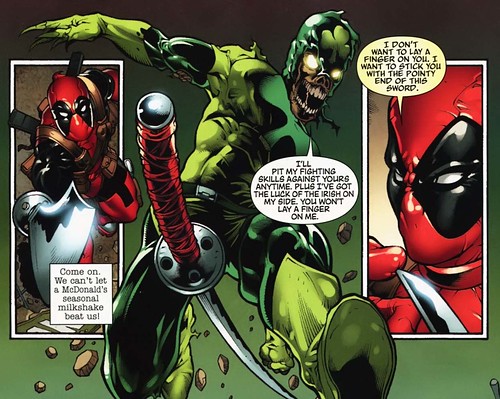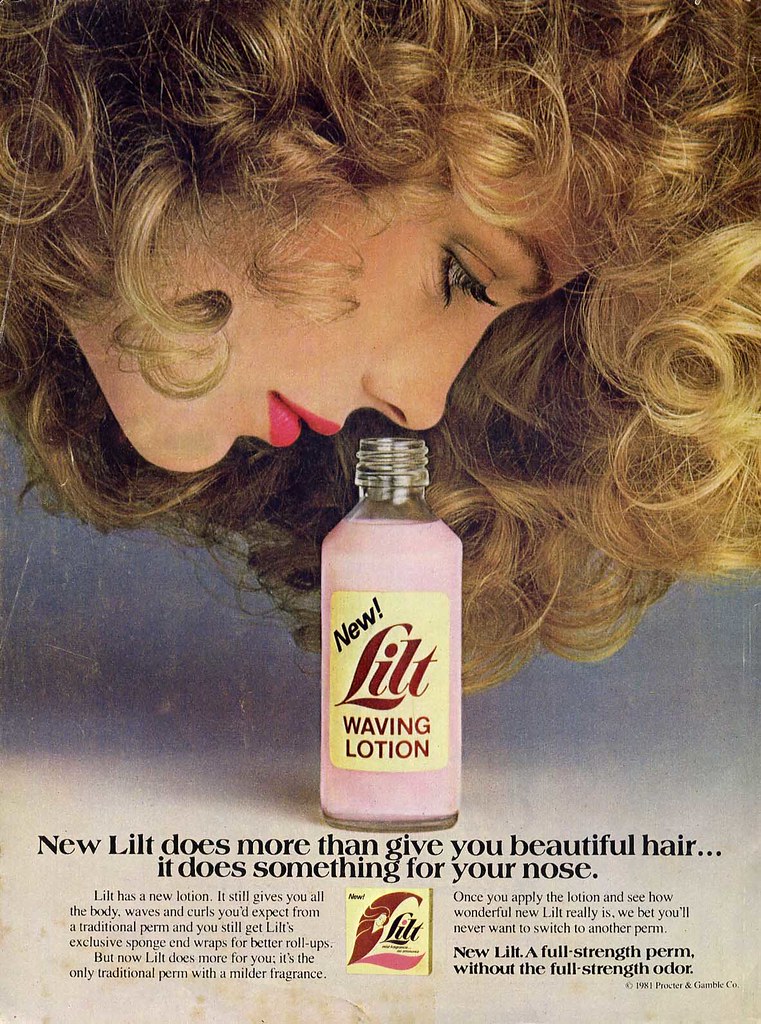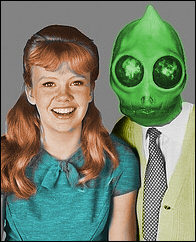 Recently I received a number of on-demand printed advertisements along with the usual coupons I receive at the check stand of the store I regularly buy my groceries from. Here is a slightly manipulated actual ad that is generated from the coupon dispensing machines. As usual, I have removed the actual store name and logo and replaced it with a fictitious business name.
Recently I received a number of on-demand printed advertisements along with the usual coupons I receive at the check stand of the store I regularly buy my groceries from. Here is a slightly manipulated actual ad that is generated from the coupon dispensing machines. As usual, I have removed the actual store name and logo and replaced it with a fictitious business name.
After paying for my groceries the coupon printer actually dispensed two of these ads along with my receipt and a couple of other coupons.
The printed advertisement from the store makes the claim that organic products are beneficial for the consumer and for the ecology of the planet Earth. This is an assertion that looks and sounds good and makes the consumer feel better about what they buy even though the term "organic" does not necessarily mean something is healthier to eat. It refers primarily to the required processes used to produce a product that is certified as organic in origin (which can be quite liberal in definition).
While the claim that organic products are superior to other foodstuffs may be true any environmental gains from organic farming must surely be negated by the obscene amounts of paper waste generated to proclaim said benefits.
The distance between the public relations claims of a company and their vendors committing to being 'green' issued from the rarefied heights of the Boardroom and the street-level reality can be measured by the the many miles of paper spam generated at the cash register.
Do the math: One 6-inch ad x an average 3000 customers per store x 2400 stores nationwide.
Related post: Waste Lots, Want Not.
Sunday, February 28, 2010
Good For You and the Earth
Posted by
Sleestak
at
2/28/2010 06:00:00 AM
2
comments
![]()
![]()
Labels: advertising, environment, fail, Grocery Store Artifact, Hayley Mills, truth to power
Saturday, February 27, 2010
If Disney purchased DC Comics
Posted by
Sleestak
at
2/27/2010 03:30:00 PM
2
comments
![]()
![]()
Labels: DC Comics, disney, Disney in other media, jimmy olsen
This is your cat on drugs
Posted by
Sleestak
at
2/27/2010 11:04:00 AM
2
comments
![]()
![]()
Labels: advertising, cats, Grocery Store Artifact
Thursday, February 25, 2010
I don't need no politicians to tell me things I shouldn't be
Eddie and the Hot Rods (1977)
Posted by
Sleestak
at
2/25/2010 06:00:00 AM
1 comments
![]()
![]()
Labels: Music
Wednesday, February 24, 2010
The False Negative
 Capturing the attentions of jaded, cynical and increasingly suspicious consumers is a never-ending battle and a billion-dollar a year industry. One of the tactics to trick the public into noticing an ad or promotion is what I term the False Negative.
Capturing the attentions of jaded, cynical and increasingly suspicious consumers is a never-ending battle and a billion-dollar a year industry. One of the tactics to trick the public into noticing an ad or promotion is what I term the False Negative.
The False Negative is becoming more pervasive over the last several years and violates one of my rules when it comes to purchasing: If a lie is needed to get me to purchase a product then I will never, ever buy it. This is just one of my rules that makes me a smart shopper but in the eyes of the Gods of Retail a poor consumer.
The False Negative manifests in any number of ways with one of the most common being the the false error tone. At various places such as the gas pump and at the check stand in supermarkets (as noted in the previous post Waste Lots, Want Not) the False Negative comes as an alert from the equipment that a person would normally associate with an error. I initially noticed it a few years ago while gassing up my car. The pump beeps with a descending tone, the opposite of the usual higher-pitching rising and happier sound of a successful transaction, prompting me to investigate by looking at the pump display screen. Where one would expect a message reminding me to choose a grade of gas instead would be an advertisement for refreshments or a car wash. This is a tactic in up-selling I expect that will decrease in effectiveness over time. Annoying consumers in this manner is a poor strategy that should only result in short-term gains, if any at all. One could only cry wolf only so many times before it is ignored.
A False Negative that has been in retail stores for a while is the floor display advertisement in supermarkets. These ads occur as large adhesive signs applied to the floor of various aisles. One of the common themes of the floor display ad is that it resembles in layout an accidental spill or scattering of a product. In the snack foods aisle the floor ad would feature a bunch of cookies laid out on a plate. In the cleaning aisle a large ad for detergent could resemble a puddle of liquid soap on the floor. Typically the ads depict a box with the product bursting from it in some sort of flavor explosion.
By making the floor display ad irregular in shape and form the eye is drawn to it. But not because the product is interesting or worth purchasing. Rather, the ad momentarily tricks the customer into paying attention to the product through a perception of something wrong (a failure of cleanliness) or even the hazard of personal danger through an unsafe area.
The shape and location of the floor advertisement causes the patron to notice it when entering the aisle and presumably keep aware of it on some level while shopping. From a distance of a few feet most of the ads appear as spills or messes and only when the patron approaches it closely does it resolve in the mind from possible slip and fall hazard to advertisement. Where I work I have observed an increase in calls for clean-ups in some aisles following the placement of certain ads which are moved and replaced on a regular schedule. Often customers walking by an aisle alert the employees of the store to a spill and when investigated, none is found.
I have personally observed that both the customers and employees are predictably desensitized to the False Negative of the faux spill and safety hazard. After a day or two calls for clean up to the area with the floor ad begin to wane as patrons and the employees become adjusted to the ad and awareness of it fades into the visual and mental background. I have found that it is incumbent upon the managers to ensure that each call for a clean up is thoroughly investigated as due to human nature bored, careless or over-worked staff will assume yet another notification of a spill is going to prove to be without real cause.

It would be interesting and not totally without merit to track slip and fall cases in retail establishments to when and where floor display advertisements were placed. An insurance company could possibly find a correlation from the possible result of an injury claim due to messes where not rapidly attended from the assumption there was no spill and the call for a clean up of an aisle was merely another False Negative ad on the floor.
Posted by
Sleestak
at
2/24/2010 06:00:00 AM
8
comments
![]()
![]()
Labels: advertising, consumerism, false negative, Grocery Store Artifact, lies, Marketing
Monday, February 22, 2010
The Dark Halo
 I may be the only one to ever comment on an extinct video artifact; that of the Dark Halo, a unique lens flare common to early television. There were a number of limitations to such new and expensive means of communication and for decades the promising technology was unable to fulfill its full potential as a medium. It was, in spite of its advanced nature, a fairly simple means of communication and it would take years of development and the anticipation of market penetration to work out all the bugs.
I may be the only one to ever comment on an extinct video artifact; that of the Dark Halo, a unique lens flare common to early television. There were a number of limitations to such new and expensive means of communication and for decades the promising technology was unable to fulfill its full potential as a medium. It was, in spite of its advanced nature, a fairly simple means of communication and it would take years of development and the anticipation of market penetration to work out all the bugs.
Early television worked but it didn't work all that great. Static, ghosts and other problems caused by transmission, reception and the limits of the equipment made television viewing something of a general disappointment. Television wasn't the slick eye-party of modern times. The questionable quality was endured because that was all there was. It was the transmission of the information, not the experience, that made broadcast television worthwhile in the early days.
One of those artifacts of broadcast television of days long gone that surely caused concern among broadcasters was the Dark Halo. I'm sure there is a technical term for it but I don't know what it is. The Dark Halo was a lens flare caused by the inability of the camera or equipment to fully process the image against an overwhelming light source. It was caused by a bright point of light reflecting into the camera. Typically a bright, intense reflection from a ring, piece of metal, glass or sequins on a dress or suit would cause a bright flare on the image. Instead of a bright, white glow and haze the equipment would instead create a momentary darkened halo around a bright center. In modern film craft the bright lens flare is a camera technique used on purpose for effect (Star Trek, CSI, etc.) but in the past it was an annoyance that highlighted the limits of technology.
In the image/link above a Dark Halo can be seen on the sparkly jacket worn by Buck Owens just above his hand on the guitar neck. For performers like Buck who wore 'nudie suits' and the slinky sequined dresses favored by female stars like Barbara Streisand during their television performances the Dark Halo was a constant and familiar presence for the viewer. It was also nearly restricted to the black and white era. By the time color began to appear in television the image processing difficulties were being overcome for the most part, though on many shows one
can still observe the occasional Dark Halo flare overwhelm the equipment. This is evident from the reflections seen coming from from the jewels on Cinderella's crown in the 1965 broadcast of Rodgers and Hammersteins' Cinderella.
The Dark Halo is also something I look for when a modern show recreates television scenes of the past as I am nerdy that way. These are normally depicted during scene on a camera or monitor as a black and white image that is in the foreground of a set (as in the film That Thing You Do). In those rare instances I have yet to see any show faithfully recreate the darkened lens flare or other video artifacts with the exception of poorly rendered lettering or titles superimposed on the image.
Posted by
Sleestak
at
2/22/2010 06:00:00 AM
9
comments
![]()
![]()
Labels: dark halo, lens flare, Music, nerd, technology
Sunday, February 21, 2010
That's a really huge sword
Posted by
Sleestak
at
2/21/2010 08:16:00 AM
1 comments
![]()
![]()
Labels: deadpool, Seduction of the Innocent
Thursday, February 18, 2010
I get stuff
The fine folks at Fantagraphics and W.W. Norton, via ultra-blogger Bully, have sent me a bunch of books for my collection. I expect that one of these days someone will realize how much my reviews suck and cut me off. But until then much appreciated! The big prize in these books is The Book of Genesis by Robert Crumb. Like the Wolverton Bible, this title is a must have for those interested in the uncensored words of one of the most pervasive religions of the world. Robert Crumb's gritty art is perfectly suited for the task, conveying people as suffering under harsh conditions and also making them come off as unwashed perverts much of the time.
The big prize in these books is The Book of Genesis by Robert Crumb. Like the Wolverton Bible, this title is a must have for those interested in the uncensored words of one of the most pervasive religions of the world. Robert Crumb's gritty art is perfectly suited for the task, conveying people as suffering under harsh conditions and also making them come off as unwashed perverts much of the time.
What becomes even more clear when aided by the art is that one of the underlying themes of the this section of the Bible is slavery. Everyone subservient to both man and deity because that is what the All-Knowing has ordered. The corrupt, criminal and even misguided claim to speak for God or at the least expect the populace to obey them because they maintain that is what God demands usually under threat of a terrible penalty for disobeying. Crumb did not approach this work is his usual familiar style but as straight illustration. Though because of his unique style some of his humor unexpectedly creeps in at places.
This version of The Book of Genesis is one of interpretation, though perhaps a much more honest one than that pushed by the usual suspects. One telling scene that illustrates perfectly the problems with interpretation is when scripture quotes a man is killed because he displeased God the panel depicts him as being murdered by a thief. In reading the "original" text it is conveyed the victim was struck down by some supernatural means and not by the sharp blade of a criminal seeking money. Here is a good review by R. C. Harvey.
The Squirrel Machine by Hans Rickheit. I expected to read this and find it to be a charming steam-punk story. Instead it turned out to be at turns shocking and disturbing but worth the accolades.
Johnny Ryan turns in another interesting work in Prison Pit. Violent and definitely not for kids.
Another treasure is Portable Grindhouse: The Lost Art of the VHS Box. Cleverly packaged and full of nostalgia for a guy like me. A younger generation probably won't see the appeal beyond the kitschy art but I get a big kick out of it. I have seen all of these films and owned a number of them. One of the things that were readily available in Korea in the 1980s were cheap video cassettes and being stationed there I watched a lot of B-movies. Good times.
Newave! The Underground Mini Comix of the 1980s is a collection of uncensored strips from indie artists and cartoonists. These are comic history and it would have been a shame for these to have been lost to time like so much of the more mainstream Golden Age work.
West Coast Blues. A French noir thriller that has been adapted to a number of formats over the last few years. This graphic novel is one such adaptation and it works well.
The Unclothed Man in the 35th Century A.D. by Dash Shaw. The work is dense and thoughtful and there are plenty of examples of amazing and creative use of color to support the story without overwhelming it.
Last but not least is a great collection of political cartoons by Lawrence Herblock. Herblock is published by the W.W. Norton Company and is no mere prop to be brought out of the closet, dusted off and strategically positioned on a coffee table by hipsters to impress during a cheese-tasting party. Not only does this massive tome document seven decades of opinion by a master of the craft but accompanying the book is a DVD containing over 18,000 cartoons. You could use this book to teach a college course, no kidding.
Posted by
Sleestak
at
2/18/2010 05:00:00 PM
3
comments
![]()
![]()
Labels: crumb, fantagraphics, genesis, graphic novels, religion
Tuesday, February 16, 2010
Gonna wash that man right outta my hair
Posted by
Sleestak
at
2/16/2010 08:33:00 AM
2
comments
![]()
![]()
Labels: advertising, sex sells
Sunday, February 14, 2010
Valen-Treasures for Valentine Day
Posted by
Sleestak
at
2/14/2010 11:00:00 AM
2
comments
![]()
![]()
Labels: arts and crafts, Holidays, Valentine's Day
One Hundred and One Just Won't Do
HELL YES, Sheena.
Some wild talent, obsession and unbridled passion for your Valentine's Day listening pleasure. Way better than Bolero. Enjoy, you crazy cats!
From 1989.
Posted by
Sleestak
at
2/14/2010 06:00:00 AM
0
comments
![]()
![]()
Labels: holiday, Valentine's Day
Tuesday, February 09, 2010
The only thing left to appear on is candybar wrappers
 With the pretty actress being featured on the March 2010 issue of the high-brow Architectural Digest, I think we are rapidly approaching some sort of Jennifer Aniston Singularity.
With the pretty actress being featured on the March 2010 issue of the high-brow Architectural Digest, I think we are rapidly approaching some sort of Jennifer Aniston Singularity.
Honestly, Jennifer Aniston's image appears on more things than Jesus at this point. But what the heck, she's nicer to look at.
While her home is very nice the rumpus room/slash firing range wallpapered with mutilated photos of Brad and Angelina is kind of creepy and I think AD readers would have been better served skipping that part of the photo tour.
Posted by
Sleestak
at
2/09/2010 06:00:00 AM
7
comments
![]()
![]()
Labels: advertising, Marketing
Sunday, February 07, 2010
Uber Chicle FAQ
A bunch of people were very interested in my original posting of the price list for UBER CHICLE, the miraculous neoprene that cures all bodily and spiritual ills by harnessing the awesome power of gobbledygook. In the previous post UBER CHICLE, I point out that the sellers of the magic rubber inexplicably admit that their product is made from wetsuit material.
Skeptical readers found this difficult to believe. Surely not even the most foolish snake oil representative would admit their product was a useless scam for fear of the intelligent consumer investigating their claims and shying away from their product, thereby harming sales. It seems to be an odd mixture of confession and grifting. Perhaps it is a preemptive admission so as to explain against the inevitable questions of how Uber Chicle neoprene differs from the standard wet suit neoprene. As example, production artifacts such as glue and thread common to both Uber Chicle and a wet suit. Well, very few people ever lost money underestimating the gullibility of others.
Posted here is the proof of Uber Chicle's origin from the actual website of the manufacturer. As before, I changed the name of the product to prevent anyone from using this site as a resource for actually looking the junk up and buying it (a public service really, much in the same spirit as not giving a toddler a loaded gun because something stupid and tragic will inevitably occur).
Grammatical awkwardness from the translation to English aside, the FAQ is full of the usual nonsensical pseudo-science word salad common to quack medicine of this sort designed solely to separate the foolish and desperate from their money.
 Again I implore anyone reading this: If you are sick, please seek real medical help. Relying on quack science can be a matter of life and death for some people.
Again I implore anyone reading this: If you are sick, please seek real medical help. Relying on quack science can be a matter of life and death for some people.
Posted by
Sleestak
at
2/07/2010 06:00:00 AM
2
comments
![]()
![]()
Labels: Grocery Store Artifact, gullible, junk-science, quackery, scam, stupid, superstition, uber chicle, woo-woo

































